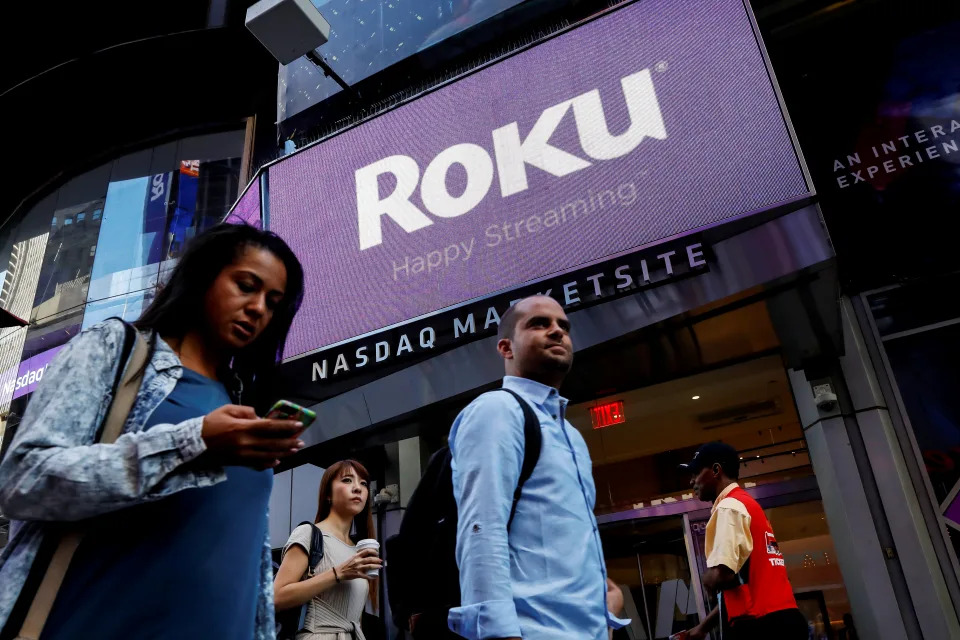The Tech Industry Faces Workforce Challenges in 2023 Due to Economic Pressures, the COVID-19 Pandemic, and Business Challenges. Here’s a Comprehensive List of Major Layoffs, and We’ll Keep Updating as the Situation Develops.
September

Roku layoffs
In its second round of layoffs for 2023, Roku is saying goodbye to an additional 300 employees. This comes on the heels of the 200 layoffs in March and another 200 in late 2022. Roku’s primary objective is cost reduction, which includes reducing its workforce, discontinuing certain shows and movies on its platform, consolidating office spaces, and trimming expenditure on external services.
July

Google layoffs
In July, Google came under scrutiny when its contracting partner, Accenture, laid off 80 subcontractors who had voted to establish the Alphabet Workers Union-CWA the previous month. Accenture stated that the decision was driven by cost-cutting measures. While the company maintained that it respected the subcontractors’ right to unionize, former team members alleged that Google was engaging in retaliation against labor organizers.
CD Projekt Red layoffs
Even the creator of Cyberpunk 2077, CD Projekt Red, is not immune to business challenges. In July, the company issued a warning that it would be implementing layoffs affecting approximately 100 employees over the next few months, equivalent to about nine percent of its workforce. Some of these layoffs could extend as late as the first quarter of 2024. CEO Adam Kiciński candidly explained that the decision was driven by the realization that CD Projekt Red had become “overstaffed” during a reorganization aimed at better managing the company’s expanding product roadmap, which encompasses new titles within the Cyberpunk and Witcher franchises.
June

Spotify layoffs
In June, Spotify announced a continuation of its restructuring efforts, following its initial layoff plans in January. This time, the company revealed its intention to eliminate 200 positions within its podcast unit. This strategic move is aimed at fostering a more focused approach to podcasting, with the goal of allocating resources more effectively to creators and shows. Additionally, Spotify is merging its Gimlet and Parcast production teams to form a revitalized Spotify Studios division.
GrubHub layoffs
GrubHub, under the weight of economic challenges and competition from rivals such as Uber, made the decision to reduce its workforce by 15 percent in June, equating to approximately 400 employees. This significant move occurred shortly after the departure of outgoing CEO Adam DeWitt. The newly appointed CEO, Howard Migdal, asserted that these job cuts were necessary to ensure the company’s competitiveness in the market.
Embracer Group layoffs
In June, the prominent game publishing company Embracer Group unveiled its intention to implement layoffs as part of a sweeping restructuring initiative aimed at reducing expenses. Although the company did not specify the exact number of employees affected among its 17,000-strong workforce, it anticipated that the overhaul would persist through March. This announcement followed closely on the heels of Embracer’s revelation that it had lost a $2 billion deal with an undisclosed partner, despite having a verbal agreement in place.
Sonos layoffs
Sonos, facing challenges in achieving profitability, is taking steps to restore its financial health. In June, the company announced its intention to reduce its workforce by 7 percent, equating to approximately 130 positions. Additionally, Sonos planned to divest real estate assets and reassess program spending. CEO Patrick Spence cited “continued headwinds,” including declining sales, as contributing factors to these measures.
Plex layoffs
Plex, a popular app for streaming local and online media, has not been immune to financial challenges despite its wide user base. In June, the company made the decision to lay off approximately 20 percent of its workforce, which amounted to 37 employees. These layoffs impacted various departments within the company. Plex is reportedly grappling with the effects of a slowdown in the advertising market and is actively seeking to reduce expenses and achieve profitability.
May

Shopify layoffs
Shopify, which played a pivotal role in supporting e-commerce during the peak of the pandemic, is now making adjustments as the surge subsides. In May, the Canadian company decided to reduce its workforce by 20 percent and divest its logistics business to Flexport. Founder Tobi Lütke described these job cuts as essential to refocusing on Shopify’s core mission. He acknowledged that the company needed to enhance its efficiency, particularly in light of the shift away from the “stable economic boom times” of the past.
Polestar layoffs
In May, Polestar, the Volvo spinoff brand, encountered delays in the production of its inaugural electric SUV, the Polestar 3, which subsequently had an impact on its workforce. Due to reduced manufacturing expectations and economic challenges, the company announced its intention to reduce its workforce by 10 percent in May. Polestar attributed the delays to the need for additional time for software development and testing, which also had a knock-on effect on the EX90 model.
SoundCloud layoffs
SoundCloud, following a round of substantial layoffs in the previous year, announced further staff reductions in May. The streaming audio service revealed its plans to cut 8 percent of its workforce, aiming to achieve profitability in 2023. According to sources cited by Billboard, SoundCloud aspires to attain profitability by the fourth quarter of the year.
April

Lyft layoffs
Lyft, which had previously laid off 13 percent of its staff in November 2022, initiated further restructuring efforts in April. The ridesharing company announced a significant reduction of its workforce, affecting 1,072 employees, equivalent to approximately 26 percent of its total headcount. These actions followed an executive reshuffle that saw the appointment of former Amazon executive David Risher as CEO, replacing Logan Green. Risher emphasized the need to streamline the company’s operations and refocus on delivering a better experience for both drivers and passengers. This shift in strategy came after Green had previously expressed the necessity for Lyft to increase its spending to compete with Uber.
Dropbox layoffs
Cloud storage companies are not exempt from the challenges posed by the current economic landscape. In April, Dropbox announced its plans to reduce its workforce by laying off 500 employees, accounting for approximately 16 percent of its total team. Co-founder Drew Houston attributed these cuts to a convergence of factors, including economic challenges, the maturation of the business, and the need to capitalize on the increasing interest in artificial intelligence (AI). Although the company remained profitable, its growth rate was decelerating, and some investments were no longer deemed sustainable, as stated by Houston.
March

Roku layoffs
Roku had already cut 200 jobs by the end of 2022, but the restructuring continued into March 2023 when the streaming platform creator laid off an additional 200 employees. The rationale remained consistent—Roku aimed to rein in escalating expenses and prioritize projects with the most significant impact. The company has been grappling with a challenging economic environment and the conclusion of a pandemic-induced surge in streaming video.
Lucid Motors layoffs
Luxury electric vehicle (EV) manufacturers are not immune to economic challenges, and Lucid Motors exemplified this vulnerability in March when it announced a workforce reduction of 18 percent, affecting approximately 1,300 employees. The company had been struggling to meet its production targets, and these layoffs were intended to address “evolving business needs and productivity improvements.” The cuts were implemented across various roles, including executives and contractors.
Meta (Facebook) layoffs
Meta, formerly known as Facebook, embarked on a series of workforce reductions starting in the fall of 2022 when it cut 11,000 jobs. The company’s restructuring continued into March 2023, with the announcement of plans to lay off an additional 10,000 employees as part of its ongoing cost-cutting efforts. The initial layoffs affected the recruiting team, but in late April, the technology teams were scaled down, followed by reductions in business groups in late May. Meta’s strategy involves streamlining operations by reducing management layers and assigning some leaders responsibilities previously handled by lower-level employees. The company anticipates that its staff count will remain stagnant for some time, with a hiring freeze expected to persist until after the completion of its restructuring efforts in late 2023.
February

Rivian layoffs
Rivian, the emerging electric vehicle (EV) brand, had previously implemented layoffs in 2022, but those measures proved insufficient to address its financial challenges. In February, the company carried out another round of layoffs, affecting approximately six percent of its workforce, or around 840 employees. Rivian has been contending with ongoing struggles to achieve profitability, further exacerbated by production disruptions stemming from supply chain issues. CEO RJ Scaringe explained that these job cuts are aimed at enabling Rivian to concentrate on the most impactful aspects of its business.
Zoom layoffs
Zoom, a ubiquitous tool during the height of the pandemic’s remote work era, has subsequently experienced cutbacks as people return to offices. In February, the video conferencing company announced a significant reduction of its workforce, with approximately 1,300 employees, or 15 percent of its staff, being affected. CEO Eric Yuan acknowledged that the company had not hired in a sustainable manner during the rapid surge in demand. These layoffs were deemed necessary to help navigate a challenging economic climate. The management team also took additional measures beyond the layoffs, with Yuan reducing his salary by 98 percent for the next fiscal year, and all other executives seeing a 20 percent reduction in their base salaries, as well as the loss of their fiscal 2023 bonuses.
Yahoo layoffs
Yahoo, has not been immune to workforce reductions. In February, the internet brand announced its plans to lay off more than 20 percent of its workforce throughout 2023, affecting over 1,600 employees. The majority of these cuts, approximately 1,000 positions, were implemented immediately. Notably, CEO Jim Lanzone attributed these layoffs not to economic conditions but as part of a restructuring effort within the advertising technology unit. The aim was to discontinue an unprofitable business segment in favor of a more successful one. Essentially, Yahoo decided to step back from direct competition with Google and Meta in the advertising market.
Dell layoffs
The pandemic recovery and challenging economic conditions have posed significant challenges for PC manufacturers, and Dell felt the impact particularly acutely. In early February, the company made the decision to reduce its workforce by five percent, which translated to approximately 6,650 employees. This move came in the wake of a harsh fourth quarter during which computer shipments plummeted by an estimated 37 percent. Dell indicated that previous cost-cutting measures had fallen short, necessitating these layoffs and a more streamlined organizational structure as essential steps to regain its footing.
Deliveroo layoffs
Food delivery services experienced a surge in demand during the COVID-19 pandemic when people avoided dining out, but now some are grappling with the challenges posed by the return of in-person dining. Deliveroo, for instance, announced plans to lay off approximately 350 employees, constituting nine percent of its workforce. Founder Will Shu mentioned that “redeployments” would reduce this number to around 300. The rationale for these layoffs mirrored a familiar pattern—the company had rapidly expanded its workforce to manage the “unprecedented” growth brought on by the pandemic, but now finds it necessary to cut costs in response to economic challenges.
DocuSign layoffs
DocuSign, a prominent name in online document signing, has also experienced the consequences of a challenging economic environment. In mid-February, the company announced its intention to reduce its workforce by 10 percent. While the exact number of affected employees was not disclosed, DocuSign had a total of 7,461 employees at the beginning of 2022. The majority of those impacted by the layoffs were reportedly in DocuSign’s worldwide field organization.
GitLab layoffs
GitLab, a significant player in the DevOps (development and operations) platform space, has seen its business impacted by the economic challenges faced by its clients, including tech giants like NVIDIA and T-Mobile. In response, GitLab announced plans to reduce its workforce by seven percent, affecting approximately 114 employees. Company chief Sid Sijbrandij cited a challenging economic climate that led customers to adopt a “more conservative approach” to software investment. Despite previous efforts to reallocate spending, GitLab found it necessary to implement these layoffs to address the evolving business landscape.
GoDaddy layoffs
GoDaddy had previously initiated layoffs early in the pandemic, particularly within its retail-focused Social platform, which resulted in over 800 job cuts. However, in February of the following year, the web service provider implemented more extensive measures. GoDaddy announced a reduction of eight percent of its workforce, affecting more than 500 employees across all divisions. CEO Aman Bhutani stated that prior cost-cutting measures had proven insufficient to navigate the challenges of an “uncertain” economy. These layoffs were part of broader efforts to enhance the integration of acquisitions such as Main Street Hub.
Twilio layoffs
Twilio, the cloud communications company, had previously implemented layoffs in September 2022, affecting over 800 employees. However, as 2023 commenced, the company undertook more extensive measures. In mid-February, Twilio announced a reduction of its workforce by 17 percent, impacting roughly 1,500 individuals. Similar to many other tech companies, Twilio indicated that previous cost-cutting initiatives had proved insufficient to withstand the challenges posed by a demanding economic environment. These layoffs were positioned as a necessary step toward achieving a more streamlined organizational structure.
January

Google (Alphabet) layoffs
Google’s parent company, Alphabet, had been implementing cost-cutting measures for some time, including the discontinuation of its Stadia gaming platform. However, in late January, the company took more extensive steps by announcing its intention to lay off 12,000 employees. CEO Sundar Pichai candidly explained that Alphabet had been hiring for a “different economic reality” and was now restructuring to prioritize its most critical businesses.
This decision had a substantial impact on Alphabet’s Area 120 incubator, with the majority of the unit’s employees losing their jobs. Additionally, sub-brands such as Intrinsic (focused on robotics) and Verily (health) also saw significant reductions in their workforces in the days leading up to the mass layoffs. Waymo, a subsidiary of Alphabet, conducted two rounds of layoffs, resulting in the elimination of 209 positions, equivalent to eight percent of its workforce.
Amazon layoffs
Amazon initially announced plans for layoffs in the fall, but these cuts were broadened in early January, with the company revealing intentions to eliminate 18,000 jobs. The majority of these job reductions were concentrated within the retail and recruiting teams. In March, Amazon extended the layoffs by adding another 9,000 positions to the list. Additionally, in April, the company disclosed that over 100 employees from its gaming division were departing.
CEO Andy Jassy attributed these layoffs to both an “uncertain economy” and the company’s rapid hiring in recent years. Amazon had experienced substantial growth during the pandemic, benefiting from the shift to online shopping. However, as people returned to in-person stores, the company’s growth trajectory began to slow down, prompting these cost-cutting measures.
Coinbase layoffs
Coinbase, a prominent cryptocurrency exchange, faced significant challenges in the crypto market downturn of 2022, and these issues continued into the new year. In mid-January, the company implemented a second round of layoffs, affecting 950 employees, shortly after it had already cut 1,100 roles. These layoffs represented one of the most substantial proportionate workforce reductions among larger tech companies, as Coinbase reduced its staff by approximately one-fifth.
CEO Brian Armstrong cited the need for these layoffs to reduce operating expenses and ensure the company’s survival during what he had previously characterized as a “crypto winter.” As part of these cost-cutting measures, Coinbase also discontinued some projects that were deemed less likely to succeed.
IBM layoffs
IBM, a long-standing pioneer in the computing industry, offered a prime example of layoffs driven by corporate strategy shifts in 2023. In late January, the company implemented layoffs affecting 3,900 employees. This move followed IBM’s divestiture of both its AI-driven Watson Health business and its infrastructure management division (now operating as Kyndryl) in the preceding fall.
The rationale behind these layoffs was straightforward—given these strategic shifts, the affected employees no longer had a role within the company as IBM pivoted its focus towards cloud computing.
Microsoft layoffs
In a move reflecting the broader trend among tech giants, Microsoft initiated its second-largest wave of layoffs in company history in 2023. The company announced its intention to cut 10,000 jobs between mid-January and the end of March. These layoffs were part of cost-cutting efforts, a response to customers scaling back their spending, particularly on Windows and devices, during the pandemic recovery.
These reductions had notable implications for certain divisions within Microsoft. They significantly impacted the HoloLens and mixed reality teams and led to changes in the development of Halo at 343 Industries, where dozens of workers were reportedly let go. Additionally, GitHub, which is owned by Microsoft, announced plans to reduce its workforce by 10 percent, affecting approximately 300 employees.
PayPal layoffs
PayPal, while considered one of the healthier large tech companies, also faced challenges posed by the tough economic climate. At the end of January, the online payment firm announced its intention to lay off 2,000 employees, which accounted for seven percent of its total workforce. CEO Dan Schulman explained that these layoffs were part of an effort to control costs and enable PayPal to concentrate on its “core strategic priorities.”
Salesforce layoffs
Salesforce, a prominent cloud software brand, made headlines in 2023 when it announced plans to lay off 8,000 employees, which equated to approximately 10 percent of its workforce. This announcement came just four days into the new year and set the tone for the company’s approach in 2023.
Despite thriving during the pandemic and experiencing rapid revenue growth, Salesforce acknowledged that it had hired too aggressively during the boom and needed to reduce its staffing level to align with the economic downturn.
SAP layoffs
SAP, a major player in the business software industry, faced a substantial 68 percent drop in profit at the end of 2022. In early 2023, the company initiated a round of layoffs affecting 2,800 employees. Unlike some other tech giants, SAP did not attribute these cutbacks to excessive pandemic-era hiring. Instead, the company framed this initiative as a “targeted restructuring” aimed at ensuring its business health. SAP maintained its outlook for accelerating growth in 2023 despite these layoffs.
Spotify layoffs
Spotify, known for its aggressive expansion in the podcast industry in recent years, changed its strategy at the beginning of 2023. The streaming music service announced in late January that it would lay off 6 percent of its workforce, affecting approximately 9,800 employees (as of the third quarter). This move was accompanied by a broader restructuring effort that included the departure of content chief Dawn Ostroff.
Despite having a record number of Premium subscribers in 2022, Spotify also experienced significant financial losses. CEO Daniel Ek acknowledged that the company had been “too ambitious” in its investments before the corresponding revenue materialized to support it.
Wayfair layoffs
Wayfair, a significant online retailer, announced in late January 2023 that it planned to lay off 1,750 team members, equivalent to 10 percent of its global workforce. Of these, approximately 1,200 were corporate staff who were let go as part of an effort to “eliminate management layers” and enhance the company’s agility and efficiency.
Wayfair had already initiated cost-cutting measures since August 2022, including the elimination of 870 positions. These layoffs were viewed as a means to expedite the company’s path to achieving break-even earnings earlier than initially anticipated.




